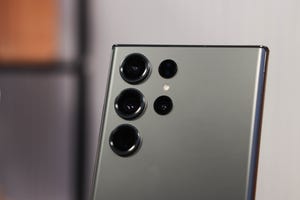
Samsung S23 Will Miss Out on 2023's Biggest Phone Trend - CNET
The Samsung Galaxy S23 series has a few new features, and the Galaxy S23 Ultra packs a 200-megapixel camera that looks like it could take sharper photos than nearly any other phone on the market. But as cutting edge as Samsung’s new premium phones are, they won’t have satellite texting, which is quickly turning into one of 2023’s biggest phone trends.
The pitch is simple: If you’re in trouble but outside the range of cell networks, your phone can contact emergency services via satellite. It seemed futuristic until Apple debuted the iPhone 14 in September with its Emergency SOS feature and US carriers lined up their own satellite service partners. At CES 2023, Qualcomm introduced Snapdragon Satellite chips for Android phones, and said it plans to activate service in the second half of this year.
It seems the S23 series won’t be getting satellite texting at all on launch day. It’s possible that S23 phones will connect to US carrier satellite service later on, though none of them have launch dates yet. It’s also possible that Samsung’s top-tier phones will lag behind Apple and even other Android flagships in emergency connectivity — at least until the second half of the year, when Samsung’s second wave of mobile devices, the Galaxy Z Fold and Galaxy Z Flip, are expected to launch and could include satellite connectivity.
It’s unclear why Samsung didn’t include the capability to connect over satellite in the new Galaxy S23 series. It packs the two big components needed for Snapdragon Satellite: the Snapdragon 8 Gen 2 chipset and the Snapdragon X70 5G modem. Since Qualcomm’s feature requires phones to be designed with Snapdragon Satellite in mind, it seems like Samsung passed on building the feature into its S23 phones from the ground up.
Samsung wouldn’t elaborate on its decision not to include satellite texting capability.
Missing out on satellite texting isn’t the biggest loss for Samsung, since it’s a “nice to have” feature, as IDC research director Nabila Popal described it. Apple’s version, which can only connect users to emergency services, has already reportedly saved several lives, but it’s more of a safety net that you’ll hope never to use than something that improves daily phone experience, like 5G.
Satellite texting only works outside mobile cell networks, so most people who stay within cities and suburbs probably won’t use the feature (unless they tumble into a canyon). But for digital-era daredevils who routinely leave the safety of cell networks, no satellite connectivity is one less reason to pick up a Samsung S23.
But it’s not just about emergency texting. Down the line, satellites will also deliver data, too.
Qualcomm went with satellite communications provider Iridium and its global satellite network for its Snapdragon Satellite feature.
Iridium
But what about satellite data?
Apple has said that Emergency SOS will only connect users to emergency services, but Qualcomm plans for Snapdragon Satellite to factor into more social uses, too. So the Samsung S23 phones arriving without any satellite functionality also means they won’t get to harness satellites for nonemergency communications later on.
Qualcomm plans to expand Snapdragon Satellite beyond emergency messaging to open it up for more social texting and data use, though it may be through a more premium subscription service. The company expects to provide voice and video communications down the line, though this will have to wait until the satellite network it’s partnered with, Iridium, launches more satellites capable of sending and receiving more data.
Carrier satellite partners will use satellites to fill the gaps in their conventional mobile networks. T-Mobile has linked up with SpaceX’s Starlink, AT&T has chosen AST SpaceMobile and Verizon has gone with Amazon’s Project Kuiper. None have announced when consumers will enjoy expanded service through satellite partners, though the carriers have mentioned that some already-released phones will be able to benefit, so it’s possible the Samsung S23 phones could still tap into satellite communications.
But based on what we know, it looks like the Samsung S23 will miss out — not only today when it launches, but years down the line when we discover new ways of using satellites to connect.


